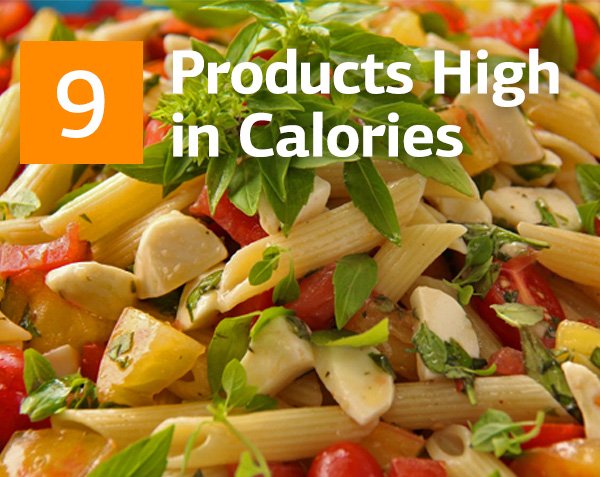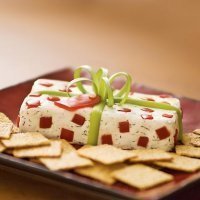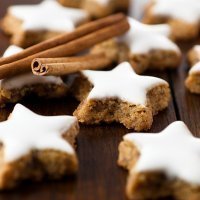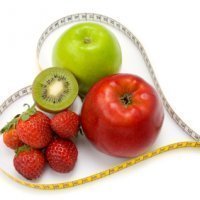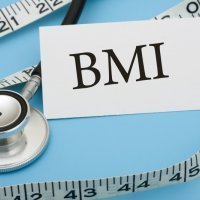What Is a Calorie and Foods Rich in Calories
A calorie is the amount of energy needed to raise the temperature of 1 litre of water by 1 degree Celsius. When eating, we are consuming the energy that is stored within the protein, carbohydrate, and fat molecules of the food. The total amount of the energy stored in the food is represented by its calorie content. First law of thermodynamics states that energy cannot be created or destroyed – it can only be transformed from one type to another. This fundamental law governs whether people gain or lose weight. Our body weight is dependent only on our caloric balance, that is the difference between the amount of calories that we consume versus the amount of calories that we burn.
Likewise, there are basic rules that determine how much one weighs, and it is impossible to contravene them. They are the following:
- If you consume more calories than you burn, you will gain weight;
- If you burn more calories than you consume, you will lose weight;
- If you eat the same amount of calories that you burn, your weight will not change.
It sounds very simple, even primitive, but people anyway often fall into self-deception trying to circumvent the nature itself.
Basal metabolic rate is a minimum amount of calories that are burned to keep our body alive by supporting vital organs: heart, brain, nervous system, lungs, kidneys, liver, muscles, and skin. If we want to accomplish anything beyond simply staying alive, such as moving our body, we will have to burn extra calories. Therefore, on any given day the total number of calories one burns is the sum of one’s basal metabolic rate plus all the additional calories burned from the performed activities.
Daily caloric needs are dependent on age, gender, level of physical activity, height and weight. An average woman consumes from 1600 to 2400 calories per day, while men require from 2000 to 3000 calories. You have to know how many calories should you eat in case if you need to lose or gain weight.
Interaction Of Calories With Nutrients
A calorie isn’t a nutrient, but certain nutrients provide calories. Protein, carbohydrates, and fat make up the calorie contents of various foods. Although not considered a nutrient, alcohol also provides calories. In fact, 1 g of protein contains 4 calories, 1 g of carbohydrates contains 4 calories, 1 g of fat contains 9 calories, 1 g of alcohol contains 7 calories. The remaining nutrients (water, minerals, and vitamins) do not provide calories, nor does fibre or cholesterol.
Deficiency Of Calories
A diet deficient in calories can lead to a variety of side effects, including fatigue and weight loss. Over time, an individual may even develop nutritional deficiencies, such as anaemia. A “calorie-deficient diet” means you are taking in fewer calories per day than your body needs as fuel to support bodily functions, everyday activity and exercise.
The most obvious signs of a calorie-deficient diet are hunger and low blood sugar. Symptoms of low blood sugar include confusion, blurred or double vision, shakiness, anxiety, sweating and heart palpitations. However, if one consumes mostly a large amount of products high in fibre but low in calories, such as vegetables and fruits, one may be not subjected to hunger, even if he or she doesn't consume an adequate amount of calories.
Another obvious sign of a calorie-deficient diet is weight loss. This is a direct result of the usage of fat storages as the prime energy source. Feeling cold all the time can also be an indicator of fat loss due to the irrelevant calorie intake. A calorie-deficient diet may eventually lead to a decline in the muscle mass. Human body relies on amino acids, the building blocks of protein and muscle. If you do not consume enough protein from the everyday meals, your body is forced to use amino acids stored in body tissues and muscles to produce energy.
Tracking calorie intake can be helpful when working to remedy calorie deficit.
Excess of Calories
Consuming an excessive amount of calories can cause serious health problems. Without adequate physical activity to burn the calories taken in, the body transforms the energy into fat. This excess fat is not healthy because it causes further weight gain and fatigue, limits mobility, contributes to aches and pains in the body. Too many calories in the daily menu over an extended period of time may even lead to obesity which is a major risk factor of type II diabetes and hypertension. Eating excess calories with the foods rich in saturated fats can also cause an increase in cholesterol levels, which may lead to atherosclerosis.
Products High in Calories
1. Pasta
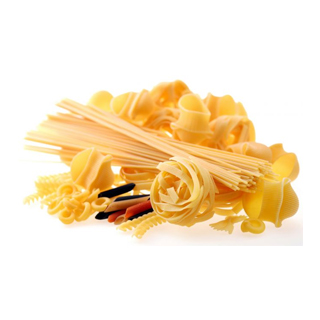 Types of Pasta Rich in Calories (100g):
Types of Pasta Rich in Calories (100g):
| Pasta, Fresh-refrigerated, Plain | |
| 100 g | 5 oz (128 g) |
| Calories: 288 kcal (14% DV) |
Calories: 369 kcal (18% DV) |
A 2-ounce serving of cooked pasta contains only 75 calories. It’s the rest of the ingredients, such as the meatballs on the spaghetti or various dressings, which contribute to this meal a high energetic value. Of course, pasta does have a lot of carbs, so it gives you a sense of fullness, but it often serves as the basis for calorie-laden meals and the energetic value of this treat rises up to 800-900 calories.
2. Peanut Butter
| Peanut Butter With Omega-3, Creamy | |
| 100 g | 1 tbsp (16 g) |
| Calories: 608 kcal (30% DV) |
Calories: 97 kcal (5% DV) |
A couple of spoons of smooth peanut butter on bread give you about 192 calories. However, it is extra high in protein, so it is not so unhealthy. Plus, there are various ways to eat peanut butter (milkshakes, smoothies...) however you like it.
3. Cheese
 Types of Cheese Rich in Calories (100g):
Types of Cheese Rich in Calories (100g):
| Cheese, Gjetost | |
| 100 g | 1 oz (28 g) |
| Calories: 466 kcal (23% DV) |
Calories: 132 kcal (7% DV) |
Cheese is basically concentrated milk, so its nutrition value is quite similar. So far, cheese is high in protein and calcium but also high in fat, cholesterol and cheese calories. One serving of the good old Cheddar cheese gives you about 70 calories, and the more fat there is in the cheese the higher is its energetic value.
4. Dressings
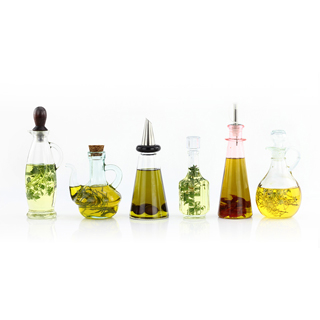 Types of Dressings Rich in Calories (100g):
Types of Dressings Rich in Calories (100g):
| Salad Dressing, Mayonnaise, Regular | |
| 100 g | 1 tbsp (14 g) |
| Calories: 680 kcal (34% DV) |
Calories: 94 kcal (5% DV) |
Depending on the kind of dressing and the amount you apply, it can count up to 90 calories for each 1-tablespoon portion (French dressing, for instance). Surely enough, creamy dressings like Parmesan always 'weigh' more than watery sauces based on kefir (fermented dairy product). So try to find out its ingredients, whether by reading the label or by asking the waiter.
5. Butter And Margarine
 Types of Butter and margarine Rich in Calories (100g):
Types of Butter and margarine Rich in Calories (100g):
| Butter, Without Salt | |
| 100 g | 1 tbsp (14 g) |
| Calories: 717 kcal (36% DV) |
Calories: 102 kcal (5% DV) |
| Margarine, Regular, 80% Fat, Composite, Stick, With Salt | |
| Calories: 717 kcal (36% DV) |
Calories: 100 kcal (5% DV) |
Salted butter has 36 calories for each 5-gram portion and the calories accumulate, like snowflakes in a snow pile depending on the thickness of the butter or margarine that you spread on the bread. Margarine can be much more detrimental, since besides fat it often contains infamous transfat, the most notorious among the high-calorie ingredients.
6. Chocolate
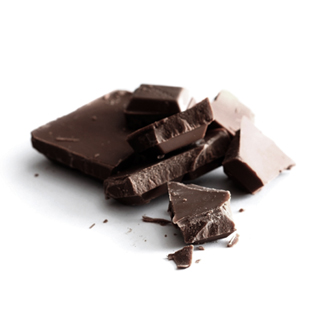 Types of Chocolate Rich in Calories (100g):
Types of Chocolate Rich in Calories (100g):
| Chocolate, Dark, 70-85% Cacao Solids | |
| 100 g | 1 oz (28 g) |
| Calories: 598 kcal (30% DV) |
Calories: 170 kcal (8% DV) |
Dark chocolate is often promoted as a part of a healthy diet, stylish and sophisticated. It is true because dark chocolate contains an abundance of nutrients and antioxidants. Unfortunately, this cannot be said about its milk brother. Milk chocolate is adored by many, but it reduces neither its extra richness in calories, nor additional sugars and fats.
7. Doughnuts
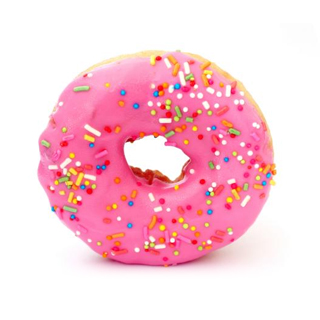 Types of Doughnuts Rich in Calories (100g):
Types of Doughnuts Rich in Calories (100g):
| Doughnuts, Cake-type, Plain, Chocolate-coated Or Frosted | |
| 100 g | 1 doughnut, medium (approx 3 inch dia) (43 g) |
| Calories: 452 kcal (23% DV) |
Calories: 194 kcal (10% DV) |
It's been a while since doughnuts served as an embodiment of home-made bakery, right out of the oven. Nowadays they tend to be a pretty apprehensive combination of sugar, different kinds of fats and cholesterol. We all know how difficult it is to resist the temptation, so try at least to surrender as rarely as possible.
8. Nuts
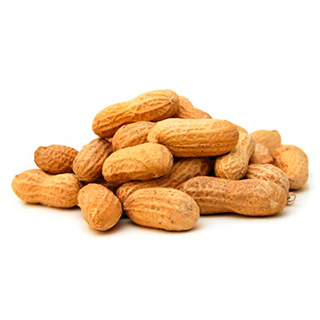 Types of Nuts Rich in Calories (100g):
Types of Nuts Rich in Calories (100g):
| Nuts, Macadamia Nuts | |
| 100 g | 1 cup, whole or halves (134 g) |
| Calories: 718 kcal (36% DV) |
Calories: 962 kcal (48% DV) |
All kinds of nuts are high in calories as a result of the high content of fats. However, these fats differ dramatically from the fats in doughnuts and junk food. These essential fats are indispensable for the proper functioning of human organism cells and come with an outstanding amount of vitamins, amino acids and fibre. It is best to consume them raw, but a cup of salted and/or roasted nuts is way better than a chocolate bar or a packaged snack.
